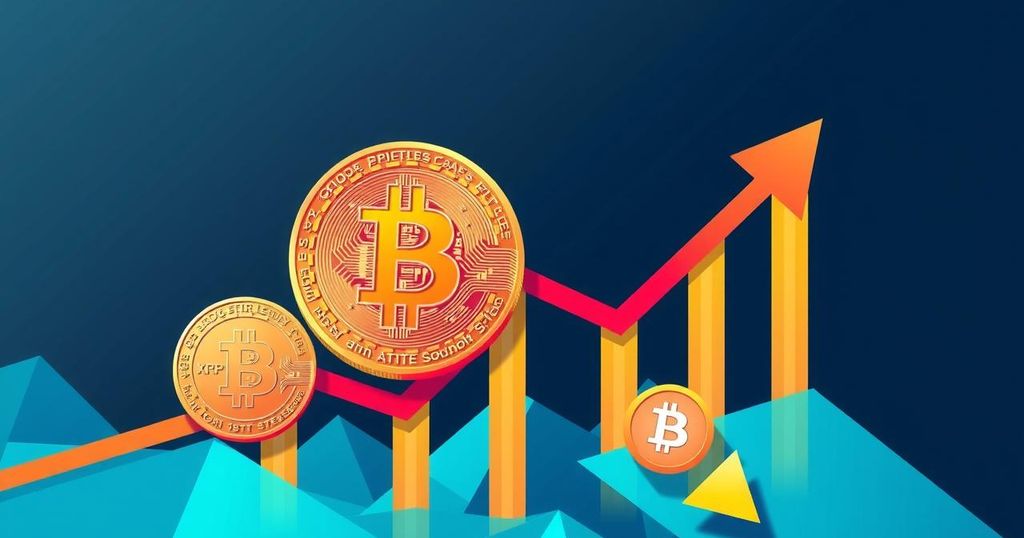The Impact of Fed Interest Rate Decisions on Bitcoin and Altcoins
The recent surge in the prices of Bitcoin and other cryptocurrencies is not solely influenced by market demand and fundamental factors. The Federal Reserve’s interest rate decisions play a crucial role in shaping the movement of digital currencies in today’s economic climate. In this article, we will delve into the significance of the Fed’s actions, how it affects Bitcoin and altcoins, and what it means for potential investors who are new to the crypto space.
The Federal Reserve, often known as the Fed, is the central bank of the United States. One of its primary responsibilities is to regulate the economy by managing interest rates. This is done through the federal funds rate, which represents the rate at which banks lend money to one another overnight. The Fed makes changes to this rate for various reasons, such as controlling inflation and stimulating economic growth.
Historical context illustrates the impact of the Fed’s actions. In the late 1970s, the United States was grappling with double-digit inflation rates, prompting the then Fed Chairman Paul Volcker to raise the federal funds rate to combat rising consumer prices. However, the resulting high interest rates led to a recession, demonstrating the delicate balance the Fed must maintain in its decision-making processes.
In the wake of the 2020 COVID-19 financial crisis, the Fed drastically reduced interest rates to near zero. This initiative was aimed at making borrowing more affordable and jumpstarting the economy. Additionally, the Fed initiated Quantitative Easing (QE) by purchasing significant amounts of government bonds to bolster economic liquidity. These actions effectively stabilized financial markets and supported a steady economic recovery.
The impact of the Fed’s interest rate decisions is far-reaching, significantly affecting various financial markets, including cryptocurrencies like Bitcoin and altcoins. Bitcoin, often considered as “digital gold,” was originally designed to be an independent store of value, detached from traditional financial systems. However, with the influx of institutional investors entering the crypto space, Bitcoin has increasingly exhibited characteristics of traditional assets, such as equities.
Institutional and retail investors now view Bitcoin as part of their broader investment portfolios, alongside stocks and bonds. When interest rates rise, these investors may redirect their funds from riskier assets, such as Bitcoin, to safer investments that offer better returns due to the higher interest rates.
Bitcoin and the S&P 500, the U.S. benchmark index, have demonstrated a consistent positive correlation in their market trends since 2020. Both assets respond similarly to the Fed’s interest rate policies and prospective rate outlooks.
Altcoins, or alternative cryptocurrencies, are even more sensitive to interest rate hikes compared to Bitcoin due to their inherently high-risk nature. When the Fed increases rates, borrowing money becomes more expensive, reducing the availability of cheap capital for speculative investments, including altcoins. Investors may consequently offload altcoins to mitigate risk, resulting in substantial price declines.
Crypto markets are known for their volatility, meaning that prices can fluctuate dramatically within a short period. Interest rate hikes often lead to a “risk-off” approach, with investors fleeing from volatile assets like Bitcoin and altcoins in favor of safer, more stable investments.
If investors anticipate continued rate hikes by the Fed, they might foresee challenging times for cryptocurrencies, prompting them to sell preemptively. Understanding how Fed interest rate decisions impact Bitcoin and altcoins is crucial for anyone investing in cryptocurrencies.
In conclusion, the increased influence of macroeconomic factors, particularly the Federal Reserve’s interest rate decisions, has transformed the independence of Bitcoin and altcoins from traditional financial systems. Awareness of how these decisions impact the crypto market can empower investors to make more informed investment decisions, helping them navigate the crypto world’s volatility and position themselves for success in this exciting but unpredictable market.
Author’s Biography: Yashu Gola, a journalist focusing on cryptocurrency markets since 2014, contributes to prominent publications such as Cointelegraph and CoinChapter. He has also previously served as the chief editor for NewsBTC, establishing his expertise in the field of cryptocurrency journalism.








Post Comment